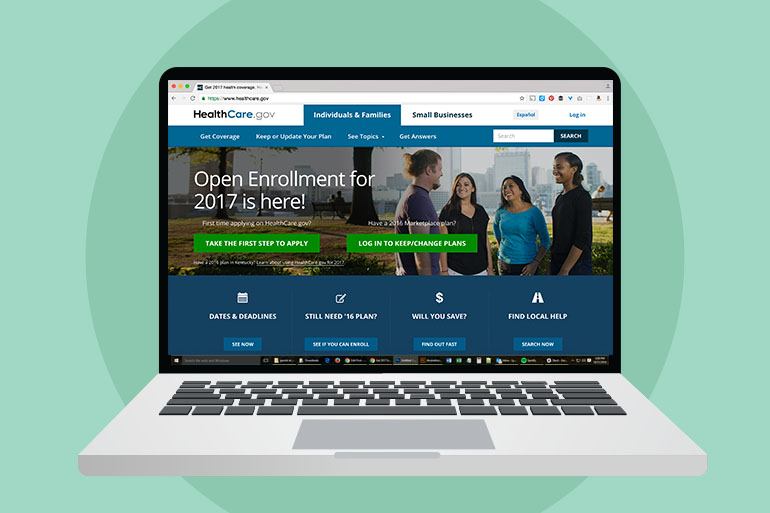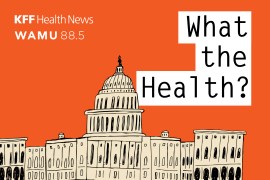With the annual sign-up period for plans on the health law’s marketplaces starting Nov. 1, many consumers are worried about rising premiums, shrinking provider networks and the departure of major insurers such as UnitedHealthcare, Aetna and Humana from many exchanges.
The impact on coverage will vary, but the shifting landscape means that it’s more important than ever for consumers to carefully evaluate the plans that are available in their area and choose the best one for their needs. There are several elements to factor into that decision.
It’s crucial to log into the marketplace and review plan details. Comparing plan premiums and deductibles only scratches the surface of what you should evaluate before selecting a plan this fall. Policy details can make an important difference in coverage and costs, but it may take some digging to uncover them.
Avoid Premium Sticker Shock
Premium increases for 2017 will generally be higher than last year’s rate hikes, though with significant geographic variation. In the two-thirds of states where the federal government runs the marketplace, the average premium increase for the second lowest cost silver plans will be 25 percent next year, according to a recent report by the Department of Health and Human Services. Last year, the comparable premium increase was 7 percent. The average premium, before tax credits, for the lowest cost silver plan will be $433.
About 85 percent of marketplace customers have incomes of up to 400 percent of the federal poverty level (about $47,000 for one person) and qualify for federal tax credits to help pay their premiums. If you are one of these consumers, it may be necessary to switch plans to minimize your share of the premium because your tax credit is pegged to the second lowest-cost silver plan in your area, which often changes from year to year.
Next year, three quarters of people can find a cheaper plan at the same metal level if they come back to the marketplace to shop. Consumers who bought the lowest cost silver plan in 2016 can save an average $58 per month by switching to the cheapest silver plan next year, according to HHS.
People with subsidies “can insulate themselves from premium increases by selecting one of the lowest cost silver plans,” said Caroline Pearson, a senior vice president at the consulting firm Avalere Health.
If you’re currently buying an individual plan but not going through the marketplace, be sure to recheck your eligibility for subsidies. Federal officials estimated earlier this month that 2.5 million people who purchased coverage outside the exchanges have incomes that would qualify for financial assistance.
Look For Hidden Benefits
A close look at plan details may show that coverage is more generous than it appears. Even as deductibles continue to rise, many plans are offering coverage for certain services before the deductible is satisfied. So instead of having to pony up the entire cost of your visit to the doctor or your prescription drug until the deductible is paid off, you may just owe a copayment.
This year, for example, 66 percent of silver-level plans sold on healthcare.gov covered primary care doctor visits before the deductible. Half of plans covered generic drugs before the deductible. (In addition, the health law requires that many preventive care services, including tests and screenings, vaccinations and contraceptives, generally be covered without requiring people to pay anything out of pocket in all new marketplace plans.)
This practice can serve two purposes. Encouraging primary care may save insurers money down the road on more expensive treatment. And exempting some services from the deductible could help make plans more appealing to the relatively healthy people insurers want to attract and who might otherwise balk at policies with a typical deductible of around $3,000.
“Part of it is trying to give people some value even if they’re not high users of health care,” said Sarah Lueck, a senior policy analyst at the Center on Budget and Policy Priorities in Washington, D.C.
Sidestep Automatic Reenrollment
 Insuring Your Health
Insuring Your HealthIf your plan is continuing next year, you may be automatically renewed, but that may not be your best option. Do some comparison shopping on marketplace plans to see whether there are changes to plan benefits or provider networks that matter to you and how 2017 pricing will affect your subsidy.
If your plan is not going to be available next year and you don’t actively pick a new plan, you may find yourself automatically enrolled in a plan with similar costs and benefits. But that can mean changes in the list of approved drugs or losing access to your favorite hospitals and doctors, among other things.
Pay attention to timing. Enrollment ends Jan. 31, but to have coverage that starts Jan. 1, you must make a choice by Dec. 15.
Check Out New Standardized Plans
Next year, healthcare.gov will join several state-based marketplaces in offering standardized plans that are expected to help consumers make apples-to-apples comparisons between plans at the bronze, silver and gold levels and cut down on confusion caused by a sometimes bewildering array of options. In these “simple choice” plans, the deductibles and annual limits on out-of-pocket spending will be standardized, as will many of the consumer payments for medical services. For example, the standardized silver plan will have a deductible of $3,500 and the maximum amount you will owe out of pocket for the year will be $7,100.
In addition to standardized benefits, many of the plans cover a number of services before the deductible is satisfied, such as primary care and specialist visits, drugs, urgent care and outpatient mental health.
Many standardized plans also rely on copayments (fixed amounts that you pay for a service), rather than coinsurance (a percentage of the cost of the service), to a greater extent than people may see in regular marketplace plans, said Sabrina Corlette, research professor at Georgetown University’s Center on Health Insurance Reforms. Insurers aren’t required to offer standardized plans in most states, but the federal government is promising that the plans will be prominently displayed on healthcare.gov.
Dig Into Prescription Drug Details
Drug coverage is a big concern for many people, but finding plan details can be tough. You can check out a plan’s list of covered drugs through healthcare.gov, but determining what your share of the cost will be can be more challenging. That’s because even though state marketplaces typically only show four cost-sharing tiers online, many plans have five, six or even more tiers. In 2016, 40 percent of silver marketplace plans had more than four cost-sharing tiers, according to Avalere data.
Also, insurers on the exchanges may require that your doctor or other health provider get prior authorization from the insurer before prescribing some drugs for you or demand that you try a less expensive drug before getting a more expensive one, a practice called step therapy, said Pearson.
“If you’re a consumer that has a lot of drug costs or takes specialty medications, actually consulting the plan documents is important, because you need more granularity than is available on the website,” said Pearson.
Check Provider Networks
You will be able to check which doctors and hospitals participate in the plans you’re considering on healthcare.gov. That’s increasingly important as networks continue to narrow and fewer plans offer any out-of-network coverage. An initiative by the federal government to communicate whether a plan’s network is basic, standard or broad in all states using the federal marketplace has been trimmed back to a four-state pilot in Tennessee, Maine, Ohio and Texas.
Use Caution When Shopping Off The Marketplace
If the marketplace plans don’t appeal and you don’t qualify for subsidies, you can shop for individual market coverage off the exchanges, although the number of such offerings has been declining, said Katherine Hempstead, who directs health insurance coverage research for the Robert Wood Johnson Foundation.
Off-exchange plans can’t be too wildly different from what’s available on the exchange, because they also have to cover the essential health benefits and offer plans in metal tiers that cover the same proportion of care as those on the marketplace, among other things. But in some markets, plans may offer different or broader provider networks outside the exchanges, said Corlette.
There’s a potential downside, however. If your income is too high to qualify for subsidies at the beginning of the year, you may qualify for them later if your income drops — for example, if you lose a major client. But that’s only an option if you’re already enrolled in a marketplace plan.
“If you’re enrolled outside the exchange and you have a change in income, you can’t qualify for a special enrollment period to sign up for a different plan,” Corlette said.
Please visit kffhealthnews.org/columnists to send comments or ideas for future topics for the Insuring Your Health column.








